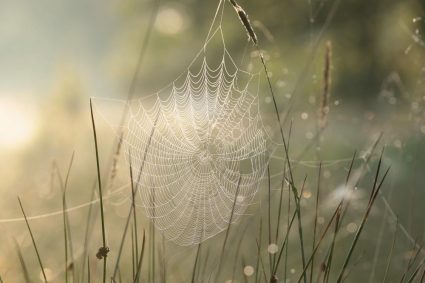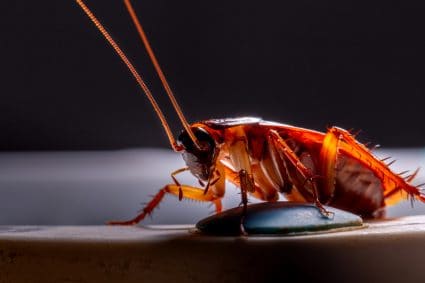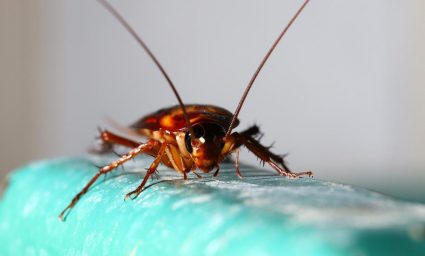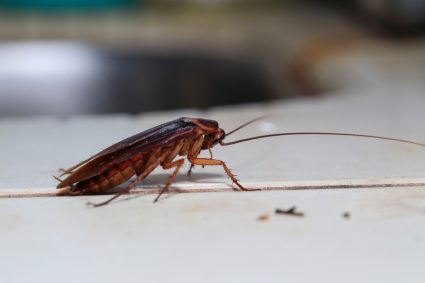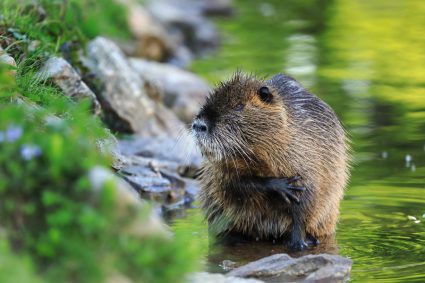
Mites are right up there when it comes to microscopic pests. They are barely visible to the naked eye, and their ability to transform into severe infestations rapidly makes them very difficult pests to control and eliminate.
Last summer, I had a mite problem that required much hard work and stressful patience despite identifying their presence much earlier than most homeowners.
Using scents to repel them was one of my main weapons against mites, successfully keeping them away from our beds until the situation was under control.
Mites hate the scent of Eucalyptus, Clove, Rosemary, Lavender, Peppermint, Tea Tree, and Lemon essential oils.
Additionally, these essential oils contain natural toxins, which help eliminate mites upon inhalation or direct contact.
Let’s learn more about mites, their danger to health, where they usually hide, how to identify dust mite infestations, and smells mites hate.
What Are Mites?

Although inevident to the naked eye, mites paint a horrifying picture when observed through a microscope. These creepy critters thrive in warm and humid climates worldwide, being one of the most common allergens found in homes.
House dust mites are the most common in households, with multiple mite species in the category. They feed on dead skin, bacteria, pollen, insect scales, and plant fibers.
Controlling dust mite infestations is usually grueling and demanding due to the extraordinary reproductive capabilities of these tiny monsters. Experts believe a moist and dusty mattress can be home to around 100,000 to two million dust mites.
Dust mites produce approximately 20 identified allergens, with their major allergen having incredible powers, even invading the fetal fluid of pregnant mothers.
During a short lifespan of 10 weeks, every dust mite produces around 2,000 pellets of feces containing harmful enzymes.
Dead mites and their dung can remain airborne for up to 20 minutes in still air, often causing respiratory issues.
Where Do Dust Mites Live in Houses?
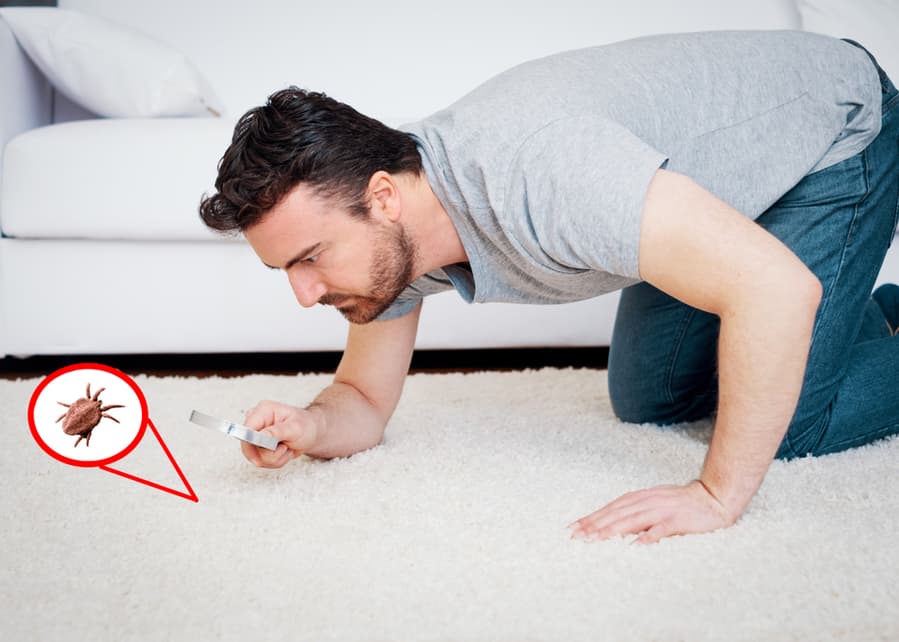
Dust mites thrive in warm and humid environments with plenty of freshly shed human or animal skin to feed on.
They are usually found in mattresses, pillows, blankets, couches, carpets, curtains, stuffed animals, and pet bedding.
They can also survive on almost any surface under favorable conditions.
Signs of Dust Mites in Homes

A survey published in the Journal of Allergy and Clinical Immunology reveals that dust mite allergens were detected in the beds of approximately 84% of the homes in the United States.
Although common, many homeowners fail to recognize the presence of dust mites if they aren’t allergic to them, unknowingly coexisting with them in unhygienic conditions.
Allergic reactions to dust mites are similar to asthma, dermatitis, eczema, and hay fever, with those with a family history of such allergies being more vulnerable.
Milder symptoms include skin, nasal, and eye irritations, cough, sneezing, facial pain, and blue-colored swollen skin under the eyes.
What Smells Repel Mites
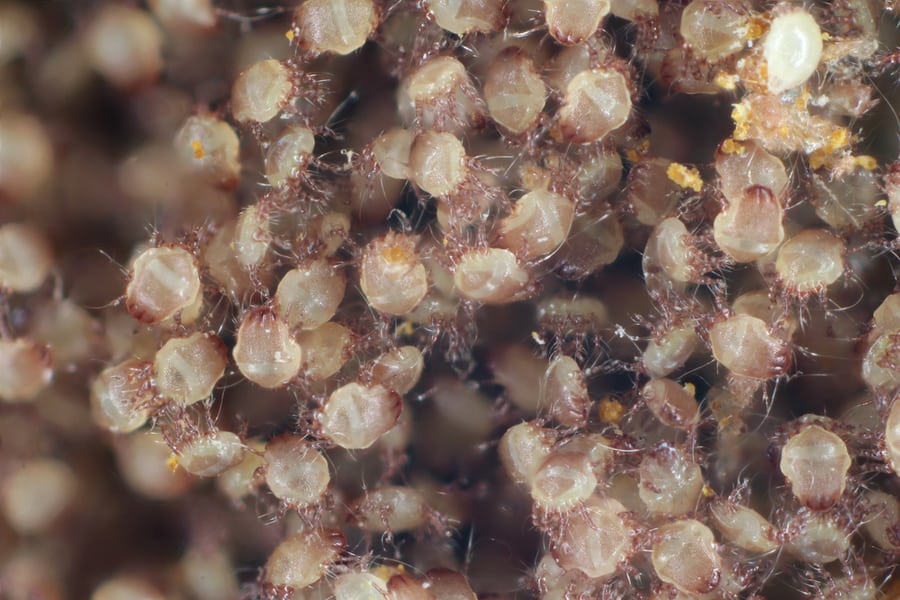
Using scents is an excellent way to repel pests, including mites. Here are some scents that I used to keep dust mites away from vulnerable surfaces and areas of our house.
Bugs, including dust mites, have an excellent sense of smell, enabling them to locate food and identify predators.
Certain essential oils emit penetrating scents that dust mites naturally find overwhelming and repulsive.
Additionally, some essential oils contain natural chemicals that are toxic to mites, resulting in immobility and death upon inhalation or touch. The following are the best essential oils to repel dust mites:
- Eucalyptus Oil
- Clove Oil
- Rosemary Oil
- Lavender Oil
- Peppermint Oil
- Tea Tree Oil
- Lemon Oil
Spraying Diluted Essential Oils

Combine 10 to 20 drops of essential oil with a cup of water and transfer the mix to a spray bottle.
Lightly spray the homemade mite-repellant on mattresses, bedding, pillows, couches, drapes, and pet bedding, and let the surfaces air dry.
Mix vinegar and multiple essential oils from the list above with water to create a more potent homemade dust-mite spray.
Washing With Essential Oils

Add five to ten drops of essential oils with detergent when washing bedding, pillows, and pet bedding, and soak for 15 minutes.
Wash on a hot cycle using hot water above 130 degrees to eliminate dust mites and their eggs.
Some essential oils leave stains. Therefore, dilute them in water before use and avoid applying high concentrations on light-colored fabrics.
Aromatherapy
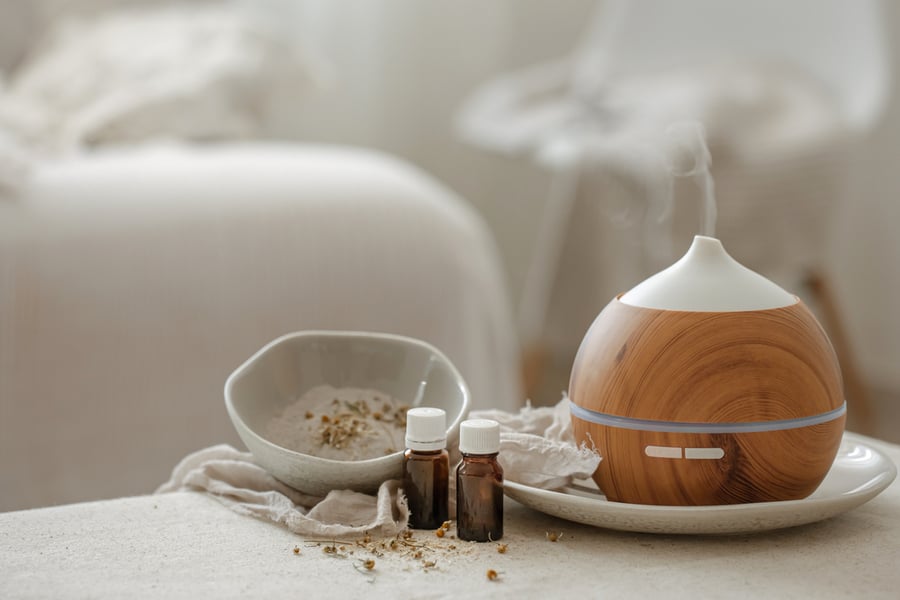
Use a diffuser to spread the penetrating scent of essential oils in bedrooms and living areas to repel dust mites.
In addition to keeping mites away, it makes homes smell amazing.
Certain individuals are allergic to essential oils. Therefore, dilute them before use, followed by a patch test.
Stop using essential oils upon experiencing symptoms such as nausea, coughing, sneezing, skin and eye irritations, shortness of breath, wheezing, vomiting, and diarrhea.
Ingestion of essential oils can cause severe poisoning. Always store them away from the reach of children and pets to prevent accidents.
Summary
Dust mites can cause serious health problems, with homeowners often oblivious to their presence since they are microscopic bugs.
Luckily, persistent allergic reactions helped us identify their presence in our home.
I used various scents, including Eucalyptus, Clove, Rosemary, Lavender, Peppermint, Tea Tree, and Lemon, alongside other preventive measures.
Frequently Asked Questions
What Kills Mites Naturally?
Temperatures above 130 F or 54.4 C kill mites naturally. Therefore, wash bedding, drapes, and carpets using hot water above 130 degrees and steam-clean mattresses, couches, drapes, and other soft surfaces to kill mites naturally.
Additionally, oils such as Eucalyptus, Clove, Rosemary, Peppermint, Tea Tree, and Lemon kill dust mites upon inhalation or touch.
Do Mites Hate Lavender?
Yes! Mites hate the smell of lavender.
Mites also hate the scents of Eucalyptus, Clove, Rosemary, Peppermint, Tea Tree, and Lemon, making them highly effective when eliminating mite infestations.
Do Mites Hate Vinegar?
The vinegar’s high acidity is lethal for mites, killing them upon touch.
Combine equal amounts of water, vinegar, and 10 to 20 drops of essential oils such as Eucalyptus, Clove, Rosemary, Lavender, Peppermint, Tea Tree, and Lemon to create a potent natural mite spray.


